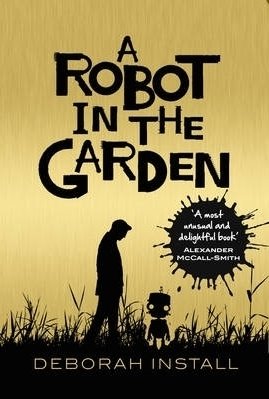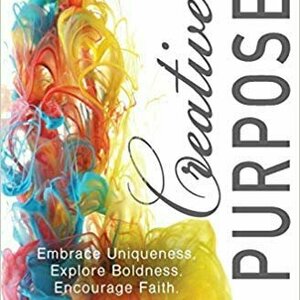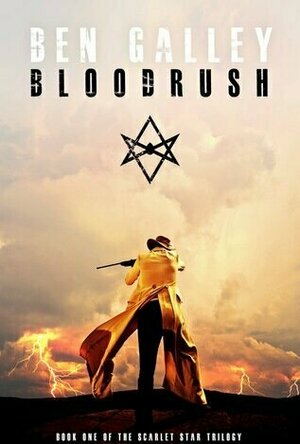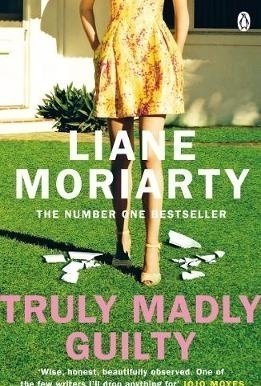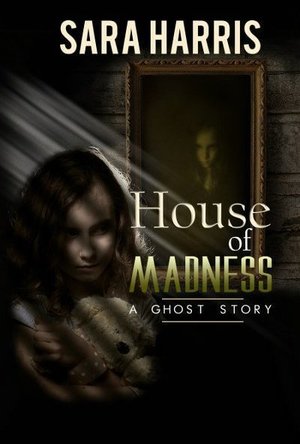Search
Darren (1599 KP) rated Alaska (1996) in Movies
Jun 20, 2019
Story: Alaska starts as we meet the Barnes family, father Jake (Benedict) a small plane pilot and his kids Jessie (Birch) and Sean (Kartheiser), the family has started a new life in Alaska after their death of Jake’s wife and mother of Jessie and Sean. While Jessie has embraced this new life enjoying the beautiful sites, Sean is struggling with new life. We also get to meet to poachers Perry (Heston) and Koontz (Fraser) who have been hunting polar bears.
When their father goes missing, Jessie and Sean aim to go in search of him through the Alaskan wilderness discovering a captured baby polar bear cub that they release who joins them on their adventure, which only attracts the poachers attention as they find themselves chased through the wilderness by the poachers too in a race against time to find their father.
Thoughts on Alaska
Characters/Performance – Jessie is the sister of the siblings, she has embraced the change to Alaska learning to be part of the team with her father, while they both want to search for their father, she is the most prepared of the two. Sean hates his new life in Alaska and wants to move back to Chicago but you can clearly see he is grieving his mother with his behaviour, but with his father missing he will do everything he can to find him, learning to love the beautiful landscape they are part of now. Jake is the father of the family that has given up his 747-pilot job to start a new life in the small town in Alaska, he does spend most of the film trapped in his plane but his character gives Jessie and Sean the reason for going on their adventure. Perry and Koontz are two poachers hunting polar bears, they cross paths with the kids as they menacingly try to recapture the polar bear cub that they had released.
Performance wise, Thora Birch and Vincent Kartheiser are both great in the lead roles as the children in search of their father. Dirk doesn’t have much to do but does what he needs to well. Charlton Heston as the menacing poacher does seem to enjoy the role he plays in the movie.
Story – The story of two young teenagers going into the wilderness to find their missing father is a nice tried and tested formula, this style of film seemed to be the rave for family films around the time too, so to stand out you had to do something different. We get the moments of peril which are good and well-paced but we also get the moments of discovery which are just as important. Obviously, there are negatives here which include the idea the adults are clueless when searching for people in crashes and poachers being just evil people. I would also like to point out, that it is very unlikely a polar bear mother is just going to accept another cub, well that is what David Attenborough has taught me.
Adventure/Family – The adventure the kids get to go on is one I remember watching as a kid going, I wanna do that and I still would like to. The family side of this film is about the unity between a broken family doing everything to stay together and of course having a cute little polar bear helping them out.
Settings – Alaska as a setting, beautiful, stunning, peril filled and perfect for the story being told.
Effects – We only have a few effects in use here, most feels practical with the stunt work and working with a potential deadly animal in a polar bear.
Final Thoughts – This is easily one of the better kids work with animal films of the 90s, one that gives you hope in humanity and a wonderful setting.
Overall: Family night sorted.
https://moviesreview101.com/2018/01/31/alaska-1996/
When their father goes missing, Jessie and Sean aim to go in search of him through the Alaskan wilderness discovering a captured baby polar bear cub that they release who joins them on their adventure, which only attracts the poachers attention as they find themselves chased through the wilderness by the poachers too in a race against time to find their father.
Thoughts on Alaska
Characters/Performance – Jessie is the sister of the siblings, she has embraced the change to Alaska learning to be part of the team with her father, while they both want to search for their father, she is the most prepared of the two. Sean hates his new life in Alaska and wants to move back to Chicago but you can clearly see he is grieving his mother with his behaviour, but with his father missing he will do everything he can to find him, learning to love the beautiful landscape they are part of now. Jake is the father of the family that has given up his 747-pilot job to start a new life in the small town in Alaska, he does spend most of the film trapped in his plane but his character gives Jessie and Sean the reason for going on their adventure. Perry and Koontz are two poachers hunting polar bears, they cross paths with the kids as they menacingly try to recapture the polar bear cub that they had released.
Performance wise, Thora Birch and Vincent Kartheiser are both great in the lead roles as the children in search of their father. Dirk doesn’t have much to do but does what he needs to well. Charlton Heston as the menacing poacher does seem to enjoy the role he plays in the movie.
Story – The story of two young teenagers going into the wilderness to find their missing father is a nice tried and tested formula, this style of film seemed to be the rave for family films around the time too, so to stand out you had to do something different. We get the moments of peril which are good and well-paced but we also get the moments of discovery which are just as important. Obviously, there are negatives here which include the idea the adults are clueless when searching for people in crashes and poachers being just evil people. I would also like to point out, that it is very unlikely a polar bear mother is just going to accept another cub, well that is what David Attenborough has taught me.
Adventure/Family – The adventure the kids get to go on is one I remember watching as a kid going, I wanna do that and I still would like to. The family side of this film is about the unity between a broken family doing everything to stay together and of course having a cute little polar bear helping them out.
Settings – Alaska as a setting, beautiful, stunning, peril filled and perfect for the story being told.
Effects – We only have a few effects in use here, most feels practical with the stunt work and working with a potential deadly animal in a polar bear.
Final Thoughts – This is easily one of the better kids work with animal films of the 90s, one that gives you hope in humanity and a wonderful setting.
Overall: Family night sorted.
https://moviesreview101.com/2018/01/31/alaska-1996/
Hazel (1853 KP) rated A Robot in the Garden in Books
Dec 14, 2018
<i>This ebook was provided by the publisher via NetGalley in exchange for an honest review </i>
What would you do if you found a robot in your garden? That is exactly what, as the title suggests, 34-year-old Ben has to answer on making this discovery early one September morning. Set in the near future where many people have androids in their houses to do the chores they do not wish to do, finding a robot is not a completely unsettling event. What is unusual, however, is that this particular robot is the opposite of the modern, shiny models: he appears to be a mishmash of Japanese fine art and something you would find on a scrap heap.
As Ben discovers, the robot, named Tang is broken and is in need of urgent care and repair. Ben becomes obsessed with trying to pry information out of the robot as to where he came from and to whom he belongs to. Bringing Tang into the house is the last straw for his wife, Amy, who after letting him know all his faults – unemployment, never achieved anything – walks out on him. Now alone, with no one else to worry about, Ben is determined to locate Tang’s creator and save the robot’s life.
What continues is a wild goose chase across America and over to Asia as the strange pairing – human and robot – follows hints and clues that could help them reach their destination. Along the way Ben gets to know Tang and learns to love him in the same way a father loves a child. No matter what mischief Tang gets himself into, Ben is always there to fix the situation. The only thing he cannot fix is Tang’s internal parts, and time is running out.
Initially the story was about a man who wanted to prove he could achieve something to show his sister and his, now, ex-wife that they were wrong about him. However later on in the novel Ben realizes he is changing for himself, not for anyone else, and the person – or robot – that has helped him to achieve this is Tang. On the other hand it is also a humorous tale that explores a character that is unable to connect to the world around him. Tang is like a human toddler who needs constant care and attention, and is fascinated by everything around him. With Ben’s love and attention he proves to the world that he is much more than a rusty metal box.
<i>A Robot in the Garden</i> is a gem of a novel that is guaranteed to make the reader laugh. It is also touching and emotionally engaging, with both heartwarming and heart wrenching moments. Deborah Install has created an accurate representation of a character that has no understanding of the happenings in the world around it, basing many hilarious instances on those of her young son.
Whilst reading this book I could not help but compare it to the film <i>Short Circuit</i> (1986) in which a robot is electrocuted and gains human intelligence. I kept picturing the storyline of <i>A Robot in the Garden</i> in my head and thinking up ways it could be portrayed on screen. Whether there are plans to make it into a film I have no idea, but I am sure it would make prize-winning picture.
Do not be put off by its science fiction classification; <i>A Robot in the Garden</i> is no <i>War of the Worlds</i> or <i>Doctor Who</i> type of story. Instead it is a brilliant piece if fiction suitable for all adults. Those with children will laugh at the similarities between Tang and their offspring, whereas those without will sympathise with Ben’s struggles to keep the robot under control. All in all a great novel.
What would you do if you found a robot in your garden? That is exactly what, as the title suggests, 34-year-old Ben has to answer on making this discovery early one September morning. Set in the near future where many people have androids in their houses to do the chores they do not wish to do, finding a robot is not a completely unsettling event. What is unusual, however, is that this particular robot is the opposite of the modern, shiny models: he appears to be a mishmash of Japanese fine art and something you would find on a scrap heap.
As Ben discovers, the robot, named Tang is broken and is in need of urgent care and repair. Ben becomes obsessed with trying to pry information out of the robot as to where he came from and to whom he belongs to. Bringing Tang into the house is the last straw for his wife, Amy, who after letting him know all his faults – unemployment, never achieved anything – walks out on him. Now alone, with no one else to worry about, Ben is determined to locate Tang’s creator and save the robot’s life.
What continues is a wild goose chase across America and over to Asia as the strange pairing – human and robot – follows hints and clues that could help them reach their destination. Along the way Ben gets to know Tang and learns to love him in the same way a father loves a child. No matter what mischief Tang gets himself into, Ben is always there to fix the situation. The only thing he cannot fix is Tang’s internal parts, and time is running out.
Initially the story was about a man who wanted to prove he could achieve something to show his sister and his, now, ex-wife that they were wrong about him. However later on in the novel Ben realizes he is changing for himself, not for anyone else, and the person – or robot – that has helped him to achieve this is Tang. On the other hand it is also a humorous tale that explores a character that is unable to connect to the world around him. Tang is like a human toddler who needs constant care and attention, and is fascinated by everything around him. With Ben’s love and attention he proves to the world that he is much more than a rusty metal box.
<i>A Robot in the Garden</i> is a gem of a novel that is guaranteed to make the reader laugh. It is also touching and emotionally engaging, with both heartwarming and heart wrenching moments. Deborah Install has created an accurate representation of a character that has no understanding of the happenings in the world around it, basing many hilarious instances on those of her young son.
Whilst reading this book I could not help but compare it to the film <i>Short Circuit</i> (1986) in which a robot is electrocuted and gains human intelligence. I kept picturing the storyline of <i>A Robot in the Garden</i> in my head and thinking up ways it could be portrayed on screen. Whether there are plans to make it into a film I have no idea, but I am sure it would make prize-winning picture.
Do not be put off by its science fiction classification; <i>A Robot in the Garden</i> is no <i>War of the Worlds</i> or <i>Doctor Who</i> type of story. Instead it is a brilliant piece if fiction suitable for all adults. Those with children will laugh at the similarities between Tang and their offspring, whereas those without will sympathise with Ben’s struggles to keep the robot under control. All in all a great novel.
What might be sabotaging your uniquely gifted contribution to the world around you? Discover the obstacles and barriers standing between you and your God-given purpose. In this revised book, youll learn how to identify ways to strengthen your calling thatll encourage you to confidently operate in the gifts and talents that God designed you to do. Through the lens of T.H. Meyers own journey, youll recognize the universal struggle in embracing your whole person as she encourages you to live a life without regrets. For the individual reader looking to examine more deeply their life purpose or a group seeking to collectively spur each other toward their God-given gifts, talents, and life. This book can be used as a 12-week, 6-week, or 4-week study guide, with exploratory questions at the end of each chapter the assist you in listening to Gods voice and revealing your unique purpose, path, or direction.
Endorsements A wonderful exploration, but not only for readers to look inwardly, but to also look around at others, at where our lives are at, and mostly upward toward Gods design and dreams for our lives. Love it! Cindy Coloma, best selling and award-winning author of over 15 books Youll come away from this wise and insightful book with a clearer understanding of how you are uniquely gifted to contribute to the world, and why its imperative that you honor your creative calling. Michelle DeRusha, author of Katharina and Martin Luther: The Radical Marriage of a Runway TH Meyer looks at the glass ceiling the world has placed between creatives and non-creatives and shatters it. This those who have felt they are not creative, too timid, or simply too late to the life they were called to live, Meyer says, Pish-posh. She delivers on her promise to help people embrace uniqueness, explore boldness, and encourage faith. Amy Young, author of Looming Transitions: Starting & Finishing Well in Cross-Cultural Service In her book, A Life Of Creative Purpose, Tammy Hendricksmeyer [TH Meyer] is a trusted mentor, offer ing us the tools we need to step completely into Gods design for us as individuals, and as members of His body. Her relatable stories coupled with scripture inspire and ignite a renewed passion for pursuing not only our own creative callings but even more, her words stoke the fire in our hearts for the Giver of these gifts. Kris Camealy, author of Come, Lord Jesus: The Weight Of Waiting A Life of Creative Purpose is a fantastic resource filled with thoughtful questions, stories, and Scripture each designed to awaken us to Gods unique purposes for our lives. It is well-written, thoughtful, and engaging, an invitation to embrace our own eternally significant creative purpose. Cindee S. Re, author of Discovering Hope: Beginning the Journey Toward Hope in Chronic Illness In her book, A Life of Creative Purpose, TH Meyer masterfully blends personal stories with wisdom from Scripture to reveal the importance of creative purpose (even if you think you are not creative.) The thought-provoking questions at the end of each chapter will help you discover (or uncover) and embrace the unique way God has made you and inspire you to step into a life of purpose, meaning, and fulfillment. JoDitt Williams, author/artist of Delight in the Word of God: A Devotional Coloring Book/Journal for Adults
My Thoughts: This is a great book to remind us about the gifts that God has for each of us. It reminds us not to be afraid to step out in faith to use the guts that God gives us to use.
This is a book of encouragement. It helps those who may not know what their purpose or gift is, to learn how to find it.
I enjoyed this book and encourage others to read it.
Endorsements A wonderful exploration, but not only for readers to look inwardly, but to also look around at others, at where our lives are at, and mostly upward toward Gods design and dreams for our lives. Love it! Cindy Coloma, best selling and award-winning author of over 15 books Youll come away from this wise and insightful book with a clearer understanding of how you are uniquely gifted to contribute to the world, and why its imperative that you honor your creative calling. Michelle DeRusha, author of Katharina and Martin Luther: The Radical Marriage of a Runway TH Meyer looks at the glass ceiling the world has placed between creatives and non-creatives and shatters it. This those who have felt they are not creative, too timid, or simply too late to the life they were called to live, Meyer says, Pish-posh. She delivers on her promise to help people embrace uniqueness, explore boldness, and encourage faith. Amy Young, author of Looming Transitions: Starting & Finishing Well in Cross-Cultural Service In her book, A Life Of Creative Purpose, Tammy Hendricksmeyer [TH Meyer] is a trusted mentor, offer ing us the tools we need to step completely into Gods design for us as individuals, and as members of His body. Her relatable stories coupled with scripture inspire and ignite a renewed passion for pursuing not only our own creative callings but even more, her words stoke the fire in our hearts for the Giver of these gifts. Kris Camealy, author of Come, Lord Jesus: The Weight Of Waiting A Life of Creative Purpose is a fantastic resource filled with thoughtful questions, stories, and Scripture each designed to awaken us to Gods unique purposes for our lives. It is well-written, thoughtful, and engaging, an invitation to embrace our own eternally significant creative purpose. Cindee S. Re, author of Discovering Hope: Beginning the Journey Toward Hope in Chronic Illness In her book, A Life of Creative Purpose, TH Meyer masterfully blends personal stories with wisdom from Scripture to reveal the importance of creative purpose (even if you think you are not creative.) The thought-provoking questions at the end of each chapter will help you discover (or uncover) and embrace the unique way God has made you and inspire you to step into a life of purpose, meaning, and fulfillment. JoDitt Williams, author/artist of Delight in the Word of God: A Devotional Coloring Book/Journal for Adults
My Thoughts: This is a great book to remind us about the gifts that God has for each of us. It reminds us not to be afraid to step out in faith to use the guts that God gives us to use.
This is a book of encouragement. It helps those who may not know what their purpose or gift is, to learn how to find it.
I enjoyed this book and encourage others to read it.
Phil Leader (619 KP) rated Bloodrush (The Scarlet Star Trilogy #1) in Books
Nov 8, 2019
It is hard to describe this book purely because it appears to try to do too much.
It is set in an alternate universe where much is familiar but some things are very different.
It is a western, mostly set in an frontier town in Wyoming with the usual cast of restless townspeople, lone prospectors and ruthless land owners.
It is a fantasy involving faeries and magick
Yet in Galley's capable hands these elements are moulded into a seamless and thrilling story. All the different aspects fit together neatly and consistently producing a terrific platform for the characters and plot.
The main character is 13 year old Tonmerion Hark (known as Merion), son of the Prime Lord (think Prime Minister) of an alternate version of Victorian Britain. When his father is murdered by assailants unknown he is sent to his last remaining relative - an aunt living in Wyoming. Travelling with him is is best friend, a faerie called Rhin who is a fugitive from the rest of the Fae. Desperate to get back to London to find his father's killer and rescue his inheritance, Merion is instead drawn into conflict and underhand dealings in the small town of Fell Falls where is aunt is the undertaker.
The alternate universe is particularly striking. Very nearly everything is familiar but with important differences. The biggest of these is clearly that creatures such as the Fae exist (even if few people have ever seen one) but other changes include the natives of America, the Shohari, not being quite human and a lot of clever differences in London that really make it clear what kind of world Merion inhabits. The magick is also well thought out with a lot of thought and imagination given to its mechanics and its implications.
Galley's writing is a joy. It is clear and concise yet conveys the scene to the reader with impressive ease. The hot sun and gritty sand of the desert feel very real indeed. The characters are very well described and a great deal of care has been taken to express them. These are not cardboard cliches, which would have been easy. Merion is the hero but at heart is still a 13 year old boy, a boy who is impetuous and complains how life is unfair. All through the book there is a subtle undercurrent of wry humour.
What this whole book reminded me of - both in the writing and in the almost but not quite like our world setting - was a slightly darker Terry Pratchett. That is not an exaggeration, This book really is up there with the very best Discworld books in terms of story and inventiveness. It is darker in tone than anything Pratchett would write and not quite as laugh out loud funny in places but it is damn close.
The story itself unfolds at a fast pace - which is good because there is a lot to get through with several plots running intertwined through the narrative and sparking off each other as they twist and turn through every reveal. The final showdown is suitably climactic and the prose as well as the magick crackles off the page in a breathless rush towards the final chapter.
I do like to balance my reviews with maybe some small point that counts against the book but I really can't think of one for Bloodrush. It simply is a magnificent piece of work. You may not have known you wanted a alternate reality fantasy western but once you have read this you will wonder where the next one is coming from.
Very very highly recommended and the 5 star rating was easy to give.
Rated: Strong language so not for the youngest of young adults
It is set in an alternate universe where much is familiar but some things are very different.
It is a western, mostly set in an frontier town in Wyoming with the usual cast of restless townspeople, lone prospectors and ruthless land owners.
It is a fantasy involving faeries and magick
Yet in Galley's capable hands these elements are moulded into a seamless and thrilling story. All the different aspects fit together neatly and consistently producing a terrific platform for the characters and plot.
The main character is 13 year old Tonmerion Hark (known as Merion), son of the Prime Lord (think Prime Minister) of an alternate version of Victorian Britain. When his father is murdered by assailants unknown he is sent to his last remaining relative - an aunt living in Wyoming. Travelling with him is is best friend, a faerie called Rhin who is a fugitive from the rest of the Fae. Desperate to get back to London to find his father's killer and rescue his inheritance, Merion is instead drawn into conflict and underhand dealings in the small town of Fell Falls where is aunt is the undertaker.
The alternate universe is particularly striking. Very nearly everything is familiar but with important differences. The biggest of these is clearly that creatures such as the Fae exist (even if few people have ever seen one) but other changes include the natives of America, the Shohari, not being quite human and a lot of clever differences in London that really make it clear what kind of world Merion inhabits. The magick is also well thought out with a lot of thought and imagination given to its mechanics and its implications.
Galley's writing is a joy. It is clear and concise yet conveys the scene to the reader with impressive ease. The hot sun and gritty sand of the desert feel very real indeed. The characters are very well described and a great deal of care has been taken to express them. These are not cardboard cliches, which would have been easy. Merion is the hero but at heart is still a 13 year old boy, a boy who is impetuous and complains how life is unfair. All through the book there is a subtle undercurrent of wry humour.
What this whole book reminded me of - both in the writing and in the almost but not quite like our world setting - was a slightly darker Terry Pratchett. That is not an exaggeration, This book really is up there with the very best Discworld books in terms of story and inventiveness. It is darker in tone than anything Pratchett would write and not quite as laugh out loud funny in places but it is damn close.
The story itself unfolds at a fast pace - which is good because there is a lot to get through with several plots running intertwined through the narrative and sparking off each other as they twist and turn through every reveal. The final showdown is suitably climactic and the prose as well as the magick crackles off the page in a breathless rush towards the final chapter.
I do like to balance my reviews with maybe some small point that counts against the book but I really can't think of one for Bloodrush. It simply is a magnificent piece of work. You may not have known you wanted a alternate reality fantasy western but once you have read this you will wonder where the next one is coming from.
Very very highly recommended and the 5 star rating was easy to give.
Rated: Strong language so not for the youngest of young adults
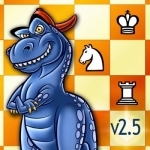
Dinosaur Chess: Learn to Play!
Education and Games
App
** Appysmarts.com: 97/100 EDITOR'S FAVORITE! ** Previously nominated for a BAFTA (Best Interactive...

Montessori Preschool
Education and Games
App
Looking for an engaging digital preschool app based on a proven teaching method? Montessori...

Motion Math: Fractions!
Education and Games
App
Play the award-winning learning game that puts the action in fraction! * Excellence in Design Award...
Kristy H (1252 KP) rated Truly Madly Guilty in Books
Feb 13, 2018
Erika has the whole event planned: an afternoon tea with her friend, Clementine, Clementine's husband, Sam, and the couple's two young daughters, Holly and Ruby. She even has a glittery art table set up for the youngsters. But the day is derailed when Erika runs into her next-door neighbor, Vid, who invites both couples over for a last minute barbecue. Erika and her husband, Oliver, aren't the last minute types; besides, they had something they needed to talk about with Clementine and Sam. But, Erika feels like obligated to say yes. Clementine and Sam are secretly relieved, as Vid and his beautiful wife Tiffany are far more personable than Erika and Oliver. The afternoon starts off well enough; Tiffany and Vid's daughter, Dakota, is even happy enough to hang out with Holly and Ruby. But by the time the night is over, lives will be changed, and all the adults--Sam and Clementine in particular--will find themselves wishing they never attended this impromptu event.
So we all know the drill by now. Liane Moriarty is a well-known master of dramatic suspense, especially at capturing the tension that hides behind ordinary lives. I went through a period where I read all of Moriarty's books; [b:What Alice Forgot|6469165|What Alice Forgot|Liane Moriarty|https://d.gr-assets.com/books/1377159022s/6469165.jpg|6659752] and her last novel, [b:Big Little Lies|19486412|Big Little Lies|Liane Moriarty|https://d.gr-assets.com/books/1399582436s/19486412.jpg|27570886], rank as two of my particular favorites. Anyway, Moriarty has become rather famous in the book world, with [b:Big Little Lies|19486412|Big Little Lies|Liane Moriarty|https://d.gr-assets.com/books/1399582436s/19486412.jpg|27570886] being made into a 7-episode HBO TV series, starring Reese Witherspoon and Nicole Kidman.
Of course, with such fame comes great responsibility. And pressure. Can a new work live up to the hype and excitement of the previous? This one will divide readers. It certainly has all the hallmarks of a typical Moriarty novel: a cast of women (and men) living ordinary lives on the surface, with a hidden veneer beneath. There's a secret layer to all of Moriarty's characters, though the drama associated with those in [b:Truly Madly Guilty|26247008|Truly Madly Guilty|Liane Moriarty|https://d.gr-assets.com/books/1467061262s/26247008.jpg|49997474] may not live up to some of her other novels.
First of all, this book will frustrate you. The beginning is incredibly maddening, as Moriarty starts leading up to the events that happened at the barbecue... in slow, excruciating detail. As she does so, we alternate chapters with the present, with the point-of-view told from our various characters. We have Erika, a slightly repressed accountant whose life has been formed around her stressful childhood as the only daughter of her hoarder mother, and Erika's husband, Oliver, her equally steady mate, who grew up with alcoholic parents and longs for the same order in life as Erika. Clementine and Erika have been friends since childhood, when Clementine basically felt Erika's friendship was forced upon her by Clementine's social worker mother, who felt bad for Erika and her flea-infested home. Clementine is a cellist and a bit of a free spirit, but she's balanced by her more grounded husband Sam, who works in business at an energy drink company. They are parents to five-year-old Holly and two-year-old, Ruby. And then, finally, we have Erika and Oliver's neighbors, Vid and Tiffany. Swarthy, wealthy Vid is a joyous, open man who loves sharing his home (and his food) with friends and family. His gorgeous wife Tiffany is his pride and joy. Their quiet 10-year-old daughter, Dakota, just loves to read.
See how I just distracted you from the events of the barbecue by a description of the characters? Imagine that, for pages and pages! It's a great technique, don't get me wrong, but there was one point where I truly wanted to fling the book across the room. "JUST TELL ME WHAT HAPPENS!" I actually shouted in my (thankfully empty) bedroom. I've read some reviews that state that the big reveal, when it happens, isn't shocking enough, but I disagree: I think that event would certainly change my life and haunt my dreams (no more than that; a spoiler will truly ruin this book).
So while this novel can be a bit frustrating, it really is a Liane Moriarty book. It's compulsively readable. At first, I thought it was a very detailed look at three self-involved couples, but over time, I realized I had really fallen for Erika and Oliver and eventually, Tiffany and Vid, too (and Dakota, I loved Dakota!). Moriarty has a way of humanizing her characters and differentiating each from another: they all stand as individuals. Even Sam and Clementine, who were my least favorites, were their own people. It's the tiny details and pieces about each that she sticks in that really build your picture of each character in your mind. Much of the book takes place in the rain, and I could truly visualize each character and every event, unspooling, in this torrential Sydney downpour.
Overall, this book connected with me less on a dramatic, "oh my gosh" level (though that exists) but more on an emotional one. It speaks to the guilt we can all feel about life events--adults and kids alike--and potentially carry with us all of our days. Not a lot may happen in the book, per se, yet it's really a strong story of friendship, marriage, life, and loss. When I framed it in that perspective, versus looking purely for moments of dramatic tension, I realized I'd really enjoyed it. A strong 3.5 stars and definitely worth picking up. Just keep an open mind.
<a href="http://justacatandabookatherside.blogspot.com/">My Blog</a> ~ <a href="https://www.facebook.com/justacatandabook/">Facebook</a>; ~ <a href="https://twitter.com/mwcmoto">Twitter</a>;
So we all know the drill by now. Liane Moriarty is a well-known master of dramatic suspense, especially at capturing the tension that hides behind ordinary lives. I went through a period where I read all of Moriarty's books; [b:What Alice Forgot|6469165|What Alice Forgot|Liane Moriarty|https://d.gr-assets.com/books/1377159022s/6469165.jpg|6659752] and her last novel, [b:Big Little Lies|19486412|Big Little Lies|Liane Moriarty|https://d.gr-assets.com/books/1399582436s/19486412.jpg|27570886], rank as two of my particular favorites. Anyway, Moriarty has become rather famous in the book world, with [b:Big Little Lies|19486412|Big Little Lies|Liane Moriarty|https://d.gr-assets.com/books/1399582436s/19486412.jpg|27570886] being made into a 7-episode HBO TV series, starring Reese Witherspoon and Nicole Kidman.
Of course, with such fame comes great responsibility. And pressure. Can a new work live up to the hype and excitement of the previous? This one will divide readers. It certainly has all the hallmarks of a typical Moriarty novel: a cast of women (and men) living ordinary lives on the surface, with a hidden veneer beneath. There's a secret layer to all of Moriarty's characters, though the drama associated with those in [b:Truly Madly Guilty|26247008|Truly Madly Guilty|Liane Moriarty|https://d.gr-assets.com/books/1467061262s/26247008.jpg|49997474] may not live up to some of her other novels.
First of all, this book will frustrate you. The beginning is incredibly maddening, as Moriarty starts leading up to the events that happened at the barbecue... in slow, excruciating detail. As she does so, we alternate chapters with the present, with the point-of-view told from our various characters. We have Erika, a slightly repressed accountant whose life has been formed around her stressful childhood as the only daughter of her hoarder mother, and Erika's husband, Oliver, her equally steady mate, who grew up with alcoholic parents and longs for the same order in life as Erika. Clementine and Erika have been friends since childhood, when Clementine basically felt Erika's friendship was forced upon her by Clementine's social worker mother, who felt bad for Erika and her flea-infested home. Clementine is a cellist and a bit of a free spirit, but she's balanced by her more grounded husband Sam, who works in business at an energy drink company. They are parents to five-year-old Holly and two-year-old, Ruby. And then, finally, we have Erika and Oliver's neighbors, Vid and Tiffany. Swarthy, wealthy Vid is a joyous, open man who loves sharing his home (and his food) with friends and family. His gorgeous wife Tiffany is his pride and joy. Their quiet 10-year-old daughter, Dakota, just loves to read.
See how I just distracted you from the events of the barbecue by a description of the characters? Imagine that, for pages and pages! It's a great technique, don't get me wrong, but there was one point where I truly wanted to fling the book across the room. "JUST TELL ME WHAT HAPPENS!" I actually shouted in my (thankfully empty) bedroom. I've read some reviews that state that the big reveal, when it happens, isn't shocking enough, but I disagree: I think that event would certainly change my life and haunt my dreams (no more than that; a spoiler will truly ruin this book).
So while this novel can be a bit frustrating, it really is a Liane Moriarty book. It's compulsively readable. At first, I thought it was a very detailed look at three self-involved couples, but over time, I realized I had really fallen for Erika and Oliver and eventually, Tiffany and Vid, too (and Dakota, I loved Dakota!). Moriarty has a way of humanizing her characters and differentiating each from another: they all stand as individuals. Even Sam and Clementine, who were my least favorites, were their own people. It's the tiny details and pieces about each that she sticks in that really build your picture of each character in your mind. Much of the book takes place in the rain, and I could truly visualize each character and every event, unspooling, in this torrential Sydney downpour.
Overall, this book connected with me less on a dramatic, "oh my gosh" level (though that exists) but more on an emotional one. It speaks to the guilt we can all feel about life events--adults and kids alike--and potentially carry with us all of our days. Not a lot may happen in the book, per se, yet it's really a strong story of friendship, marriage, life, and loss. When I framed it in that perspective, versus looking purely for moments of dramatic tension, I realized I'd really enjoyed it. A strong 3.5 stars and definitely worth picking up. Just keep an open mind.
<a href="http://justacatandabookatherside.blogspot.com/">My Blog</a> ~ <a href="https://www.facebook.com/justacatandabook/">Facebook</a>; ~ <a href="https://twitter.com/mwcmoto">Twitter</a>;
Purple Phoenix Games (2266 KP) rated Yes! Broccoli! in Tabletop Games
Mar 25, 2020
I’m sure you saw the title of this review and thought I had lost my mind. Well, I thought I had lost my mind when I saw the description of this one and immediately was excited to play it. Not that broccoli is my favorite food, but I do love it. My son, however, loves broccoli. Wait, he LOVES broccoli. Hopefully now you can understand why I would be excited to play a card game about health food geared toward children to teach them about good vs bad food items. I love my kids, and I love games. When I can combine those, I am a happy guy.
Yes! Broccoli! is a card game for 2-5 players that incorporates blind bidding, special player powers (in advanced games), and drafting elements. The hidden benefit from this game is that healthy food cards are worth more points while the junk food cards are worth negative points (boo and hiss).
DISCLAIMER: We were provided a copy of this game for the purposes of this review. This is a retail copy of the game, so what you see in these photos is exactly what would be received in your box. I do not intend to cover every single rule included in the rulebook, but will describe the overall game flow and major rule set so that our readers may get a sense of how the game plays. For more in depth rules, you may purchase a copy online from the publisher directly, or from your FLGS if stocked. -T
To setup a basic game, each player will take a personal deck of cards numbered 1-8 of the same color border (I choose orange or purple). These are the cards that will be used during the game. Shuffle the large stack of food cards as a draw deck. Draw a number of cards equal to the number of players, determine the starting player and the game is ready to be consumed!
The players will all choose one of their bid cards from their hand and place them face-down in front of them. Once all have chosen, all bid cards will be revealed simultaneously. The highest-bid card’s player will then choose one of the drawn food cards to take into their score pile. That winning player now acts as the dealer and will draw and reveal the next set of cards upon which the players will bid. As the players play all their numbered cards, they may win food cards worth many points, or they may be saddled with negative values as well. These are the junk food cards that nobody wants. Except my son, who wanted all the Candy T-Rex cards, even knowing that it will affect his score. Some people play to win. Others play to have a good time. I admire that about him. Play continues in this fashion until all bid cards have been played. Count up the points won/gathered and determine a winner! This is the basic game to be played with new players or young children.
To play a more advanced game, setup will be the same, except each player will also be dealt two special ability cards to be used during the game. These cards are very powerful, and can only be used once during the game. As this adds a new and thinky layer to the basic game, it is only recommended for older children or adult play. Examples of these special abilities are having the lowest-bid card win instead of highest card, or doubling a bid amount, or adding/subtracting three to/from a current bid.
Components. This game is a big stack of cards in a small (but appropriately-sized) box. The cards are great, and while I would prefer plastic cards for my young kids, children who can respect game components will be just fine. The art on these cards is super cute and I found myself just smiling while I was playing because not only is this game educational for youngsters, but it’s fun to look at while playing too. I made a parenthetical comment about the box being appropriately-sized, and I mean it. I appreciate when a game doesn’t try to be bigger on the shelf for that extra “presence” at the game store. When I open a box and more than 50% is air, it is very irksome to me. How wasteful. Well, not here. We have nothing bad to say about these components at all.
So while most kids may not appreciate the backstabbiness of the special abilities, adults certainly will. That said, when playing with the intended audience of children, we found that Yes! Broccoli! was a huge hit! We are still working on the younger kids and breaking them of the, “yes, the cake princess is very pretty, but you really don’t want to take her into your score pile.” Winning and losing really doesn’t matter much in the Lopez household, but gaming experiences do, and though my son doesn’t win this one ever, he loves it, and I love playing it with him. So I consider this a win, and though our official Purple Phoenix Games rating has a caloric value of 8 / 12, I do believe you will enjoy this little card game – ESPECIALLY if there are little ones in your life. Purchase it directly from the publisher at Gangway Games. You can use it as a precursor to Munchkin and Cutthroat Cavern, or as a stepstone to bidding games like Biblios and No Thanks!
Yes! Broccoli! is a card game for 2-5 players that incorporates blind bidding, special player powers (in advanced games), and drafting elements. The hidden benefit from this game is that healthy food cards are worth more points while the junk food cards are worth negative points (boo and hiss).
DISCLAIMER: We were provided a copy of this game for the purposes of this review. This is a retail copy of the game, so what you see in these photos is exactly what would be received in your box. I do not intend to cover every single rule included in the rulebook, but will describe the overall game flow and major rule set so that our readers may get a sense of how the game plays. For more in depth rules, you may purchase a copy online from the publisher directly, or from your FLGS if stocked. -T
To setup a basic game, each player will take a personal deck of cards numbered 1-8 of the same color border (I choose orange or purple). These are the cards that will be used during the game. Shuffle the large stack of food cards as a draw deck. Draw a number of cards equal to the number of players, determine the starting player and the game is ready to be consumed!
The players will all choose one of their bid cards from their hand and place them face-down in front of them. Once all have chosen, all bid cards will be revealed simultaneously. The highest-bid card’s player will then choose one of the drawn food cards to take into their score pile. That winning player now acts as the dealer and will draw and reveal the next set of cards upon which the players will bid. As the players play all their numbered cards, they may win food cards worth many points, or they may be saddled with negative values as well. These are the junk food cards that nobody wants. Except my son, who wanted all the Candy T-Rex cards, even knowing that it will affect his score. Some people play to win. Others play to have a good time. I admire that about him. Play continues in this fashion until all bid cards have been played. Count up the points won/gathered and determine a winner! This is the basic game to be played with new players or young children.
To play a more advanced game, setup will be the same, except each player will also be dealt two special ability cards to be used during the game. These cards are very powerful, and can only be used once during the game. As this adds a new and thinky layer to the basic game, it is only recommended for older children or adult play. Examples of these special abilities are having the lowest-bid card win instead of highest card, or doubling a bid amount, or adding/subtracting three to/from a current bid.
Components. This game is a big stack of cards in a small (but appropriately-sized) box. The cards are great, and while I would prefer plastic cards for my young kids, children who can respect game components will be just fine. The art on these cards is super cute and I found myself just smiling while I was playing because not only is this game educational for youngsters, but it’s fun to look at while playing too. I made a parenthetical comment about the box being appropriately-sized, and I mean it. I appreciate when a game doesn’t try to be bigger on the shelf for that extra “presence” at the game store. When I open a box and more than 50% is air, it is very irksome to me. How wasteful. Well, not here. We have nothing bad to say about these components at all.
So while most kids may not appreciate the backstabbiness of the special abilities, adults certainly will. That said, when playing with the intended audience of children, we found that Yes! Broccoli! was a huge hit! We are still working on the younger kids and breaking them of the, “yes, the cake princess is very pretty, but you really don’t want to take her into your score pile.” Winning and losing really doesn’t matter much in the Lopez household, but gaming experiences do, and though my son doesn’t win this one ever, he loves it, and I love playing it with him. So I consider this a win, and though our official Purple Phoenix Games rating has a caloric value of 8 / 12, I do believe you will enjoy this little card game – ESPECIALLY if there are little ones in your life. Purchase it directly from the publisher at Gangway Games. You can use it as a precursor to Munchkin and Cutthroat Cavern, or as a stepstone to bidding games like Biblios and No Thanks!
Heather Cranmer (2721 KP) rated House of Madness in Books
Mar 1, 2019
Good Pacing (1 more)
Interesting Characters
An Okay Ghost Story
I love love love paranormal thrillers! Ghost stories are my favorite, so when House of Madness by Sara Harris was up for review, I jumped at the chance. However, House of Madness was just an okay story. It wasn't brilliant, but it wasn't bad either.
The plot for House of Madness has been done before, but it was interesting to see how Sara Harris changed it up a bit. Adelaide (Addie), her husband Tim, and their daughter, Michaela, who's on the Autistic spectrum move to a great big house out in West Texas. Addie is an aspiring writer and had suffered a miscarriage previously. This new house, that they bought on the cheap, is their chance for a fresh start. However, it isn't long until weird things start happening and Michaela seems to have made a ghostly friend. The house previously belonged to a couple of doctors, and it also comes with a horrific past. There were times the plot seemed a bit far-fetched, but for the most part, I found the story to be enjoyable and entertaining. There were no cliff hangers in House of Madness, although I was left with one or two questions about the ending which I won't go into because to do so would mean spoilers. There were a couple of plot twists. I was able to easily predict one.
I felt some of the prose was a bit wacky sounding. One sentence in the book that sounded a bit strange was "His voice trailed off and mixed with a hot swirl of West Texas air." Maybe it's just me, but it didn't sound right. Another weird sounding sentence I found was "The closet door fell open with a creak." I imagined the door actually falling. Surely, it would have been better to write "The closet door opened with a creak"? Maybe I'm just being too pedantic. There were times when I felt like I was reading a young adult novel rather than a book aimed at adults. Saying all of that, I still did find the book to be a decent read.
I enjoyed the characters in House of Madness. They all felt realistic. Michaela and Addie seemed to be the main characters, and I enjoyed reading about them. I loved how sweet Michaela came across, and I loved how brave Addie could be. I enjoyed the little ghost girl named Lisette. I was always wondering if she'd turn out to double cross Michaela though. The ghost of Ritchie was definitely an interesting character. He was another one that made me question whether or not he would turn out bad or good. I always trusted Rochelle for some reason. The doctors, Marjorie and Roland Darkland, were also well written although they must have been very fit for an older couple considering they were probably supposed to be in their early 80s at the very least. (For the record, I'm assuming that House of Madness takes place in modern day. It's never actually mentioned what year it is.)
House of Madness is a short read, and the pacing made it feel even shorter. I thought that Sara Harris did an excellent job with the pacing. I found myself not wanting to stop reading at all. I had to know what happened next concerning the ghosts as well as the living characters.
Trigger warnings for House of Madness include violence, murder, attempted murder, mental illnesses, and talk of a miscarriage.
Overall, House of Madness was an alright read. Yes, the writing was a little shaky at times, but it's still worth reading for those who enjoy ghost stories. The characters were great, and the pacing was fantastic. I would recommend House of Madness by Sara Harris to those aged 15+ who like a short ghost story.
--
(A special thank you to Silver Dagger Book Tours for providing me with an eBook of House of Madness by Sara Harris in exchange for an honest and unbiased review.)
The plot for House of Madness has been done before, but it was interesting to see how Sara Harris changed it up a bit. Adelaide (Addie), her husband Tim, and their daughter, Michaela, who's on the Autistic spectrum move to a great big house out in West Texas. Addie is an aspiring writer and had suffered a miscarriage previously. This new house, that they bought on the cheap, is their chance for a fresh start. However, it isn't long until weird things start happening and Michaela seems to have made a ghostly friend. The house previously belonged to a couple of doctors, and it also comes with a horrific past. There were times the plot seemed a bit far-fetched, but for the most part, I found the story to be enjoyable and entertaining. There were no cliff hangers in House of Madness, although I was left with one or two questions about the ending which I won't go into because to do so would mean spoilers. There were a couple of plot twists. I was able to easily predict one.
I felt some of the prose was a bit wacky sounding. One sentence in the book that sounded a bit strange was "His voice trailed off and mixed with a hot swirl of West Texas air." Maybe it's just me, but it didn't sound right. Another weird sounding sentence I found was "The closet door fell open with a creak." I imagined the door actually falling. Surely, it would have been better to write "The closet door opened with a creak"? Maybe I'm just being too pedantic. There were times when I felt like I was reading a young adult novel rather than a book aimed at adults. Saying all of that, I still did find the book to be a decent read.
I enjoyed the characters in House of Madness. They all felt realistic. Michaela and Addie seemed to be the main characters, and I enjoyed reading about them. I loved how sweet Michaela came across, and I loved how brave Addie could be. I enjoyed the little ghost girl named Lisette. I was always wondering if she'd turn out to double cross Michaela though. The ghost of Ritchie was definitely an interesting character. He was another one that made me question whether or not he would turn out bad or good. I always trusted Rochelle for some reason. The doctors, Marjorie and Roland Darkland, were also well written although they must have been very fit for an older couple considering they were probably supposed to be in their early 80s at the very least. (For the record, I'm assuming that House of Madness takes place in modern day. It's never actually mentioned what year it is.)
House of Madness is a short read, and the pacing made it feel even shorter. I thought that Sara Harris did an excellent job with the pacing. I found myself not wanting to stop reading at all. I had to know what happened next concerning the ghosts as well as the living characters.
Trigger warnings for House of Madness include violence, murder, attempted murder, mental illnesses, and talk of a miscarriage.
Overall, House of Madness was an alright read. Yes, the writing was a little shaky at times, but it's still worth reading for those who enjoy ghost stories. The characters were great, and the pacing was fantastic. I would recommend House of Madness by Sara Harris to those aged 15+ who like a short ghost story.
--
(A special thank you to Silver Dagger Book Tours for providing me with an eBook of House of Madness by Sara Harris in exchange for an honest and unbiased review.)

